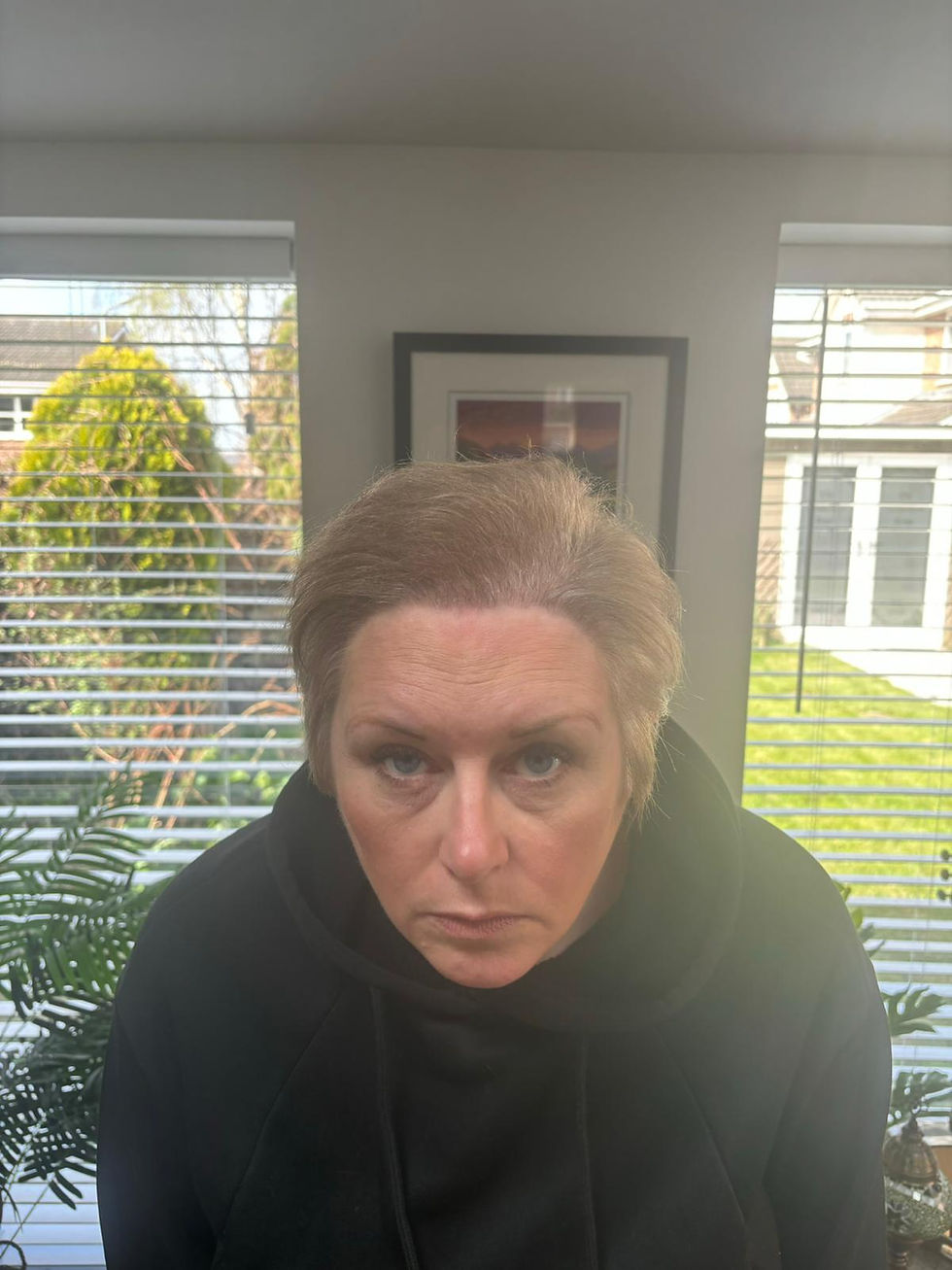Finasteride and Minoxidil: Essential Post-Hair Transplant Care?
- Vita Hair Clinic

- Sep 17
- 6 min read

A hair transplant is a surgical procedure that moves healthy hair follicles from one part of your scalp to areas experiencing hair loss. While the surgery itself lays the foundation for restoring your hair, post-hair transplant care plays a crucial role in ensuring the best possible outcome.
Proper care helps protect your newly transplanted follicles and supports their growth during recovery.
Two medications frequently recommended after a hair transplant are finasteride and minoxidil. These treatments aim to enhance recovery, reduce shedding, and maintain hair density over time.
You might be wondering: Do I need to use finasteride and minoxidil after hair transplant? This article will explore how these medications work, their benefits, and whether they are necessary for your unique situation helping you make informed decisions about your post-transplant care.
It's also important to consider certain lifestyle changes during the recovery phase. For instance, you may have questions about wearing a hat after a hair transplant, which can be a common concern for many patients.
Additionally, understanding the factors that contribute to hair transplant success rates can provide valuable insights into maximizing your results.
The Role of Medications After a Hair Transplant
Medications such as finasteride for hair loss and topical minoxidil are frequently recommended following a hair transplant to support and extend the benefits of the procedure.
While the transplant itself relocates healthy hair follicles to thinning areas, these medications help protect your existing hair and encourage new growth, contributing to more natural and lasting results.
How Finasteride Works
Finasteride targets the hormone dihydrotestosterone (DHT), which is a key driver behind genetic hair loss. By inhibiting the enzyme responsible for converting testosterone into DHT, finasteride lowers DHT levels in the scalp.
This reduction prevents further shrinkage of hair follicles, stabilizing hair loss and often reversing miniaturization of follicles before they are transplanted.
How Minoxidil Works
Minoxidil, applied topically, works differently by improving blood circulation around hair follicles. Enhanced blood flow delivers more oxygen and nutrients, stimulating the follicles to remain in their active growth phase longer. This helps both transplanted and native hairs grow thicker and stronger.
Finasteride After Hair Transplant
You may wonder, can I take finasteride after hair transplant? Many surgeons recommend starting or continuing finasteride post-surgery to reduce "shock loss," a temporary shedding phenomenon that can affect both transplanted and existing hairs.
This article explains why this happens and how to minimize shock loss with techniques like DHI.
Minoxidil After Hair Transplant
Using minoxidil similarly supports quicker regrowth and healthier scalp conditions during recovery. Both medications complement each other finasteride provides hormonal defense against ongoing loss, while minoxidil promotes follicle vitality through improved circulation creating a balanced approach to post-transplant care.
If you're considering a hair transplant or have questions about post-operative care, you might find valuable insights from Dr. Kinya's expertise.
For personalized advice or to schedule a consultation, feel free to contact us.
Benefits of Using Finasteride Post-Transplant
Using finasteride after hair transplant offers several important advantages that can significantly influence your results and long-term hair health:
1. Prevention of Further Hair Loss
Finasteride helps block the hormone DHT, which is a major culprit behind hair follicle shrinkage and progressive thinning. By controlling DHT levels, finasteride protects both transplanted and existing hairs from future loss.
2. Reduction of Shock Loss
Temporary shedding, known as shock loss, can occur after surgery due to the trauma hair follicles experience. Finasteride has been shown to reduce the severity and duration of this shedding phase, allowing for a smoother recovery process.
Surgeons typically recommend starting finasteride either before or shortly after your procedure to maximize its protective effects. The usual dosage is 1 mg daily, but your doctor will tailor this based on your medical history and specific needs.
If you wonder, "Do I need to use finasteride and minoxidil after hair transplant?" consulting your specialist will provide guidance focused on your unique situation, ensuring you get the best possible outcome without unnecessary medication.
Benefits of Using Minoxidil Post-Transplant
Using minoxidil post-hair transplant offers several important benefits that support your recovery and hair growth journey. This topical treatment is known to:
Stimulate new hair growth by encouraging dormant follicles to enter the active growth phase.
Maintain existing hair follicles by improving blood flow and nutrient delivery to the scalp, which helps keep your natural hair healthy.
Reduce shock loss, the temporary shedding that can happen after surgery, by strengthening follicles during this vulnerable period.
When it comes to timing, many surgeons advise pausing minoxidil about one week before your transplant to avoid irritation on the sensitive scalp. Typically, you can restart application approximately 2 to 4 weeks after your procedure once healing has progressed enough to tolerate topical treatments without discomfort or risk of infection.
Consistency is key with minoxidil. Applying it as directed not only supports transplanted grafts but also helps preserve the surrounding native hair, allowing you to enjoy fuller, more natural results over time.
Do You Really Need To Use Finasteride And Minoxidil After A Hair Transplant?
Whether or not you need to use finasteride and minoxidil after a hair transplant depends on your individual situation. It's important to ask yourself the question, “Do I need to use finasteride and minoxidil after hair transplant?” as part of your recovery process.
Your surgeon will take into account several factors before deciding if these medications are right for you:
Age: Younger patients with early-stage hair loss may benefit more from ongoing medication.
Extent of hair loss: If your balding pattern is advanced, these medications can help preserve existing hair.
Overall health: Any medical conditions or sensitivities could affect whether finasteride or minoxidil is suitable for you.
By creating personalized treatment plans, healthcare professionals can provide care that is specifically designed for your needs, increasing the likelihood of achieving satisfying and long-lasting results.
Alternatives And Complementary Treatments For Post-Hair Transplant Care
If you're asking, Do I need to use finasteride and minoxidil after hair transplant? it’s useful to know that other options exist to support your results. Some patients explore:
Dutasteride: A stronger DHT inhibitor than finasteride, it can be prescribed for those who require more aggressive control over hormone-driven hair loss.
Natural DHT blockers: Ingredients like saw palmetto or pumpkin seed oil may offer mild benefits in slowing hair loss without the side effects of prescription meds.
Caffeine shampoo: This topical treatment can stimulate scalp circulation and help invigorate hair follicles, complementing your post-transplant routine.
These alternatives can sometimes be combined with or used instead of traditional medications, depending on your specific needs and medical advice.
Conclusion
Understanding your post-hair transplant care summary is key to making informed decisions about your recovery journey.
Finasteride and minoxidil offer valuable benefits such as preventing further hair loss, reducing shock loss, and stimulating new growth.
These medications are not mandatory for everyone but can significantly enhance and maintain your transplant results.
The question, Do I need to use finasteride and minoxidil after hair transplant? depends on personal factors like your hair loss pattern, health, and surgeon’s advice.
Consulting with an experienced specialist ensures you receive a tailored medication plan designed specifically for your unique needs, helping you achieve the best long-term outcome.
FAQs (Frequently Asked Questions)
Do I need to use finasteride and minoxidil after a hair transplant?
While finasteride and minoxidil are commonly recommended after a hair transplant to enhance recovery and long-term results, their necessity depends on individual factors such as age, extent of hair loss, and overall health. Consulting your surgeon is essential to determine if these medications are right for you.
How does finasteride help after a hair transplant?
Finasteride works by reducing dihydrotestosterone (DHT), the hormone responsible for hair loss. Post-transplant, it helps prevent further hair loss and reduces shock loss—the temporary shedding that can occur after surgery—thereby supporting the longevity of your transplanted hair.
What benefits does minoxidil provide following a hair transplant?
Minoxidil promotes hair growth by improving blood circulation to the follicles. After a transplant, it can stimulate new hair growth and help maintain existing follicles, contributing to better overall transplant outcomes when used according to medical guidelines.
When should I start using finasteride and minoxidil after my hair transplant?
Surgeons typically recommend starting finasteride shortly after the procedure to prevent shock loss and support new growth, while minoxidil use may begin once the scalp has sufficiently healed. It's important to follow your surgeon's specific timing and dosage instructions for optimal results.
Are there alternatives to finasteride and minoxidil for post-hair transplant care?
Yes, alternatives such as dutasteride—a medication that also inhibits DHT—and natural remedies like caffeine shampoos can complement or substitute standard treatments. These options may support overall scalp health but should be discussed with your specialist to tailor your post-transplant care plan.
Why is personalized treatment important after a hair transplant?
Hair loss patterns, health status, and individual responses vary greatly. Personalized treatment plans ensure that medications like finasteride and minoxidil are used appropriately based on your unique needs, maximizing the success of your hair transplant while minimizing unnecessary medication use.













.png)
Comments